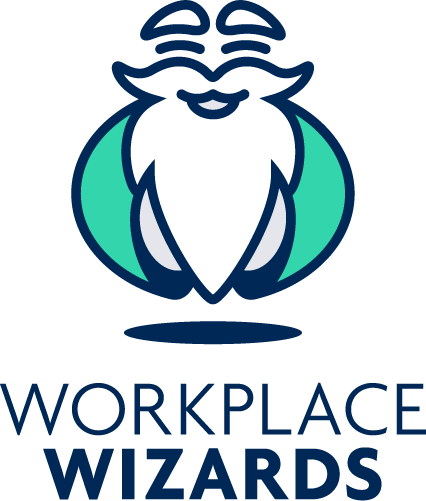Workplace drug and alcohol testing has been a hot topic of late.
But with site drug testing now blessed by all-powerful CFMEU – what does this mean for employers?
Where goes the CFMEU so goes Victorian Labor.
Many of us would have recently seen the recent (and gymnastically impressive) backflip by the CFMEU – through its National Secretary Dave Noonan – from absolutely opposing site testing to giving it qualified endorsement over the space of a few months.
This creates some headaches for its comrades in Victorian Labor who recently scrapped a Victorian construction code containing mandatory drug testing claiming it to “ideologically driven” (noting the new Victorian government is focusing instead on safety risk mitigation through plans to breath-test MPs in parliament house).
Now, however, the Premier supports this backflip as a positive development for workplace safety!
All this aside, what does this mean for your ability to conduct alcohol and drug testing for your employees?
If you are in the construction industry, expect a new level of support for your ability to randomly test all employees ‘on the tools’ using saliva-based testing.
Expect to see a new policy incorporated into the CFMEU template EBA for the 2015-2019 period once it is finalised later this year. Don’t get too excited though, it will have strict qualifications on employers and (at least) a ‘three strikes’ policy whereby employees found to be impaired by drugs or alcohol and breaching the policy will be continually ‘rehabilitated’ and the ability to dismiss employees for breaches very difficult or qualified.
Like many aspects of the CFMEU pattern agreement, it is likely to not suit your needs or operations (Note – if you are covered by this Vic template agreement please note its nominal expiry date is likely to be next Thursday. Email me about potential replacement agreement options to ease reduce costs and improve productivity).
For other employers in heavily unionised environments, it is likely the other smaller unions (in less safety-sensitive industries than the CFMEU, which is probably all of them) will fall into line and adopt the CFMEU’s position (or find it impossible to continue their opposition in light of these recent developments). Therefore, you should experience less resistance from your union to you including such a practice in your EBA or company policies.
However, even if you do not have a heavily unionised environment, there are some important considerations you should bear in mind when seeking to introduce a drug and alcohol testing policy:
Testing method – urine vs saliva? The shorter testing window of saliva-based drug testing means this will detect only those drugs in an employee’s presence consumed recently.
Whilst some employers may consider this a disadvantage, it makes it much easier to ‘sell’ a shorter detection window to argue the testing regime is safety-related.
Employers can argue they are only concerned with whether employees are ‘impaired’ or ‘affected’ by recent drug consumption, not whether there is a ‘presence’ of drugs in a urine sample which is unrelated to the ability to safely perform work on the day of the test.
Whilst there is still clarity required though the Australian Standard/NATA and decisions such as [2014] FWCFB 7889 don’t help, saliva testing will become the future testing method for most Australian workplaces; Testing type – Testing often falls into four categories being pre-employment, cause testing – accident or near miss, cause testing – visual (manager tests on reasonable suspicion of employee appearing to be ‘affected’) and random.
Random testing is by far the most controversial and most difficult to roll out to a sceptical work environment.
My preference here is to recommend to employers to implement a dual testing regime, random testing for those in ‘safety-sensitive’ roles and no random testing for those in office or non-safety exposed roles, but I recognise this won’t work for all employers.
You can counter resistance to random testing through a clear policy and lots of information to employees confirming the testing is being introduced to keep them all safe; Confirmation testing – Can you do (and defend) on-site confirmation tests, or do you need confirmation testing done by an external ‘laboratory’?
What assurances can you get from your testing agency on timeframes for such testing and what do you do with your employee who has ‘failed’ the initial test in this waiting period?; and Encourage self-reporting – Employers should be open to creating a dialogue with employees whereby they are prepared, and trusting, enough to ‘self-report’ and mitigate safety risks before an incident or testing occurs.
This can be achieved through a deluge of employee information and safety or consultative committee ‘buy-in’ and amnesty periods before testing occurs for those with substance or alcohol dependence issues. You might also consider a self-reporting or self-testing mechanism for those employees on prescription medication or who suspect they might be affected and unsafe (and not, as a result of such admissions, face disciplinary sanctions as a result (within reason)).
The CFMEU has finally moved from the wrong (and surely uncomfortable) side of the safety debate relating to workplace drug testing and is taking steps to better ensure their members are safe at work. This is a welcome development and employers should be encouraged by such developments, but still take the care to craft their policies, employee information campaigns and testing methodology to ensure the competing interests (safety, privacy, medical issues, addiction etc.) in this complex workplace issue are managed appropriately.
Workplace Wizards partners with employers to create and implement sound and defensible company policies including workplace drug and alcohol testing regimes. Email me at support@workplacewizards.com.au to receive my suggested policy wording or find out more.



0 Comments Leave a comment
Comments are closed.